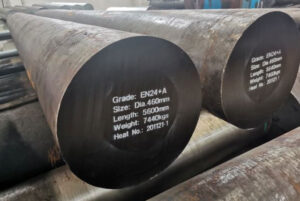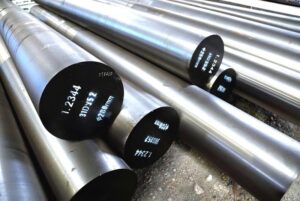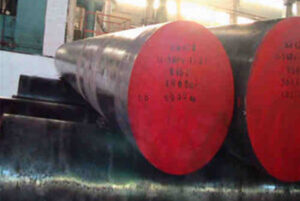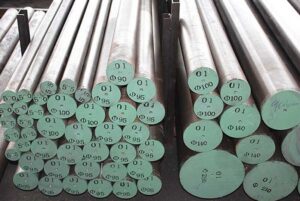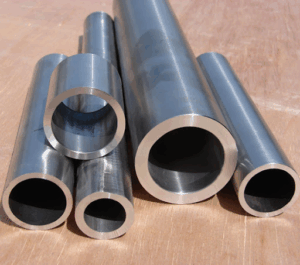When it comes to high-performance stainless steels, Special Steel 316/316L are household names in the industry. These austenitic stainless steels are renowned for their exceptional corrosion resistance, mechanical properties, and versatility in various applications. Whether you’re in the marine industry, pharmaceuticals, or food processing, these materials have something special to offer. Ready to dive deep into the world of Special Steel 316 and 316L?
Overview of Special Steel 316/316L
Special Steel 316/316L are part of the 300 series of austenitic stainless steels. These steels are characterized by the inclusion of molybdenum, which enhances their corrosion resistance, especially against chlorides and other industrial solvents. The primary difference between 316 and 316L lies in their carbon content—316L has a lower carbon concentration, making it ideal for welding applications.
Key Features of Special Steel 316/316L
- Excellent Corrosion Resistance: Suitable for harsh environments, including marine and industrial applications.
- High Strength: Maintains strength and toughness at both high and low temperatures.
- Weldability: 316L, with its lower carbon content, is particularly suitable for welding without the risk of carbide precipitation.
- Versatility: Used in a variety of industries, from medical to petrochemical.
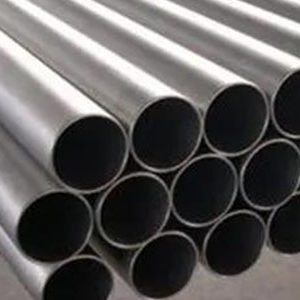
Types and Compositions
Understanding the specific types and their compositions is crucial for selecting the right material for your needs. Here’s a detailed breakdown:
| Type | Composition | Key Properties |
|---|---|---|
| 316 | Fe, 16-18% Cr, 10-14% Ni, 2-3% Mo | Excellent corrosion resistance, high strength |
| 316L | Fe, 16-18% Cr, 10-14% Ni, 2-3% Mo, Low C | Enhanced weldability, prevents carbide precipitation |
| 316Ti | Fe, 16-18% Cr, 10-14% Ni, 2-3% Mo, Ti | Improved resistance to sensitization |
| 316N | Fe, 16-18% Cr, 10-14% Ni, 2-3% Mo, N | Increased strength and hardness |
| 316LN | Fe, 16-18% Cr, 10-14% Ni, 2-3% Mo, Low C, N | Combines properties of 316L and 316N |
| 316H | Fe, 16-18% Cr, 10-14% Ni, 2-3% Mo, High C | Higher creep resistance at elevated temperatures |
| 316LVM | Fe, 16-18% Cr, 10-14% Ni, 2-3% Mo, Very Low C | Vacuum melted, high purity for medical implants |
Applications of Special Steel 316/316L
Special Steel 316 and 316L find applications across a multitude of industries due to their remarkable properties. Here’s a closer look at where and how these steels are used:
| Industry | Application |
|---|---|
| Marine | Boat fittings, marine hardware, coastal architectural components |
| Medical | Surgical instruments, orthopedic implants, medical devices |
| Food Processing | Food preparation equipment, brewing tanks, dairy industry |
| Chemical Processing | Chemical tanks, heat exchangers, process piping |
| Pharmaceutical | Pharmaceutical equipment, drug production machinery |
| Automotive | Exhaust manifolds, catalytic converters, trim components |
| Aerospace | Aircraft components, engine parts, landing gear |
| Oil and Gas | Offshore drilling rigs, pipelines, valves |

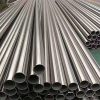
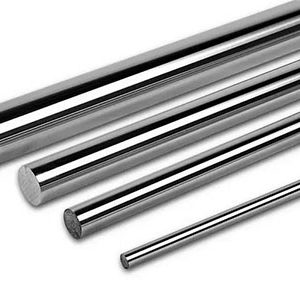
Properties and Characteristics
The properties of Special Steel 316 and 316L make them stand out in various demanding environments. Let’s explore these properties in detail:
| Property | 316 | 316L |
|---|---|---|
| Density | 8.0 g/cm³ | 8.0 g/cm³ |
| Melting Point | 1371-1399°C | 1371-1399°C |
| Tensile Strength | 515 MPa | 485 MPa |
| Yield Strength | 205 MPa | 170 MPa |
| Elongation at Break | 40% | 40% |
| Hardness (Rockwell B) | 79 | 79 |
| Thermal Conductivity | 16.3 W/m.K at 100°C | 16.3 W/m.K at 100°C |
| Electrical Resistivity | 74 µΩ·cm at 20°C | 74 µΩ·cm at 20°C |
| Modulus of Elasticity | 193 GPa | 193 GPa |
Specifications, Sizes, Grades, and Standards
When selecting Special Steel 316 and 316L for specific applications, knowing the specifications, sizes, grades, and standards is essential. Here’s a comprehensive guide:
| Specification | 316 | 316L |
|---|---|---|
| ASTM Standard | ASTM A240, A276, A312 | ASTM A240, A276, A312 |
| DIN Standard | 1.4401 | 1.4404 |
| EN Standard | X5CrNiMo17-12-2 | X2CrNiMo17-12-2 |
| Sizes | Sheets, Plates, Bars, Pipes, Tubes | Sheets, Plates, Bars, Pipes, Tubes |
| Grades | 316 | 316L, 316LVM, 316Ti, 316N, 316LN, 316H |
Suppliers and Pricing Details
Finding reliable suppliers and understanding the pricing landscape is critical for procurement. Here’s a list of notable suppliers and an overview of pricing:
| Supplier | Products Available | Price Range |
|---|---|---|
| ThyssenKrupp | Sheets, Plates, Bars, Tubes | $2.50 – $5.00 per kg |
| Outokumpu | Sheets, Plates, Tubes | $2.70 – $5.20 per kg |
| AK Steel | Bars, Tubes, Wire | $2.60 – $5.10 per kg |
| Sandmeyer Steel | Plates, Bars | $2.55 – $5.15 per kg |
| ArcelorMittal | Sheets, Plates, Tubes | $2.75 – $5.25 per kg |
| Nippon Steel | Sheets, Plates, Bars | $2.80 – $5.30 per kg |
| ATI Metals | Sheets, Plates, Tubes, Bars | $2.65 – $5.15 per kg |
Advantages and Limitations
Understanding the pros and cons of Special Steel 316 and 316L helps in making informed decisions. Here’s a comparative analysis:
| Aspect | 316 | 316L |
|---|---|---|
| Corrosion Resistance | Excellent | Excellent, better in welding |
| Strength | High | Slightly lower than 316 |
| Weldability | Good | Superior due to lower carbon |
| Temperature Tolerance | Excellent | Excellent |
| Cost | Slightly higher than other stainless steels | Similar to 316 |
| Durability | High | High |
| Application Versatility | Wide range of applications | Wide range of applications |
| Maintenance | Low | Low |
Comparing Special Steel 316 and 316L with Other Materials
When it comes to choosing between Special Steel 316/316L and other materials, it’s essential to consider various factors such as performance, cost, and application suitability. Here’s how 316 and 316L stack up against other commonly used materials:
| Parameter | 316/316L | 304 | Carbon Steel |
|---|---|---|---|
| Corrosion Resistance | Superior | Good | Poor |
| Strength | High | Moderate | High |
| Weldability | Excellent (316L) | Excellent | Fair |
| Cost | Higher | Lower | Lowest |
| Temperature Tolerance | Excellent | Good | Moderate |
| Application Range | Wide | Wide | Limited |
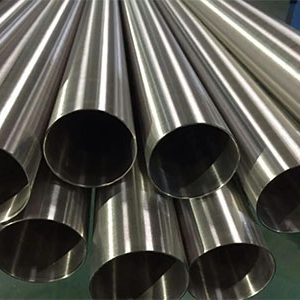
Insights and Examples
To illustrate the versatility and reliability of Special Steel 316/316L, let’s dive into some real-world examples and insights:
- Marine Applications: In the harsh marine environment, where saltwater corrosion is a constant threat, 316 stainless steel is the material of choice for boat fittings and marine hardware. Its exceptional resistance to pitting corrosion makes it ideal for prolonged exposure to seawater, ensuring longevity and reliability even in the toughest conditions.
- Medical Industry: In the medical field, particularly in surgical instruments and orthopedic implants, 316L stainless steel is preferred for its biocompatibility and corrosion resistance. Surgeons rely on its strength and durability for critical procedures, ensuring patient safety and successful outcomes.
- Food Processing: Special Steel 316/316L is widely used in food processing equipment due to its hygienic properties and resistance to corrosion from acidic and alkaline food products. From brewing tanks to dairy machinery, these steels maintain product integrity and comply with stringent hygiene standards, ensuring food safety and quality.
- Chemical Processing: In chemical plants where exposure to corrosive chemicals is inevitable, 316 stainless steel provides unmatched resistance. Its ability to withstand acids, alkalis, and high temperatures makes it indispensable for chemical tanks, heat exchangers, and process piping, ensuring reliable operation and minimal downtime.
- Aerospace Applications: Special Steel 316/316L plays a crucial role in aerospace applications, where components must withstand extreme conditions and rigorous performance standards. From aircraft components to engine parts, these steels offer exceptional strength-to-weight ratio, corrosion resistance, and durability, contributing to the safety and efficiency of air travel.
FAQs
Q: What is the difference between 316 and 316L stainless steel?
A: The primary difference lies in their carbon content. 316L stainless steel contains lower carbon content compared to 316, making it more suitable for welding applications without the risk of carbide precipitation.
Q: Is Special Steel 316/316L suitable for high-temperature applications?
A: Yes, both 316 and 316L stainless steels exhibit excellent temperature tolerance, making them suitable for high-temperature environments such as chemical processing and aerospace applications.
Q: Can Special Steel 316/316L be used in contact with food?
A: Absolutely. Special Steel 316/316L is commonly used in food processing equipment due to its hygienic properties, corrosion resistance, and compliance with food safety regulations.
Q: What are the main advantages of Special Steel 316/316L over other stainless steels?
A: Some key advantages include superior corrosion resistance, high strength, excellent weldability (especially in the case of 316L), and versatility across various industries.
Q: How does the cost of Special Steel 316/316L compare to other materials?
A: While the cost of Special Steel 316/316L may be slightly higher than some other stainless steels, its superior properties and performance justify the investment, particularly in critical applications where reliability is paramount.
In conclusion, Special Steel 316 and 316L stand out as top choices in the world of stainless steels, offering a unique combination of corrosion resistance, mechanical properties, and versatility. Whether you’re navigating the high seas, saving lives in the operating room, or pushing the boundaries of aerospace technology, these steels have what it takes to meet the most demanding challenges. With their exceptional performance and reliability, Special Steel 316 and 316L continue to shape the future of innovation and engineering across industries.

